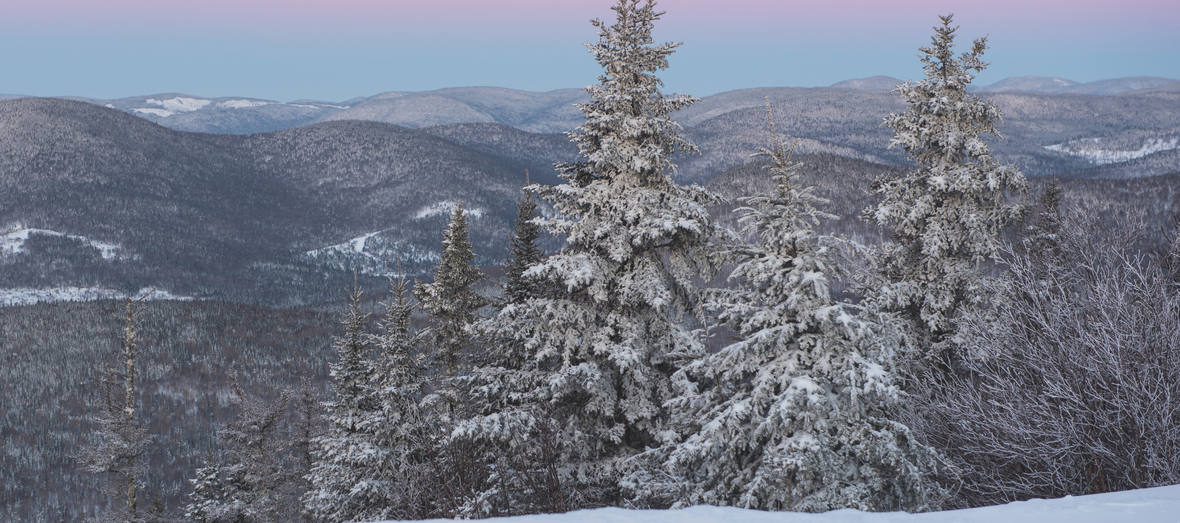4 Things You Didn’t Know About Being a Ski Instructor

Jean‑François Beaulieu has been teaching alpine skiing for 34 years and has led the ski school at Mont Sainte‑Anne for 19 years. With that experience, he reveals the lesser-known aspects of his job, beyond the falls, turns, and hot chocolate.
A Clientele of All Ages
Contrary to what you might think, his students come from very diverse age groups:
- Tiny beginners (as young as 3 years old)
- Teenagers in specialized programs (Minis Talents, Young Talents, moguls, freestyle, snowboard, etc.)
- Adults in technical clinics, training camps (pre‑season, Christmas break, March break), or personalized training
The dynamic changes a lot depending on age. Kids learn incredibly fast, and it’s the instructor’s job to teach them to ski safely, but in a fun way. With adults, the relationship is different: during chairlifts, they often have deep conversations. Everyone is there to enjoy the mountain, the fresh air, and the beautiful views.
%20(12).png?locale=fr)
Photo credit : Région de Québec © GouvQc / Charles Mercier
The Instructor: More Than Just a Teacher
When a kid doesn’t feel like skiing, the instructor (and sometimes a supervisor) becomes a negotiator. Some children are scared, being on a mountain at 5 years old can be intimidating. Others get discouraged when they fall or struggle.
Whatever the reason, the instructor’s job is to change their mind. Often, once they see others having fun, they join in. And when all else fails, a hot chocolate can work miracles.
The Certification Process
The Ski Instructors Alliance of Canada (AMSC) is in charge of training and certifying ski instructors across the country.
1.The Apprentice Instructor Program
Before certification, many schools offer an apprentice instructor program that combines about 12 hours of AMSC training with 12 hours of on-snow practice. This program helps participants become familiar with teaching methods, basic skiing techniques, and how to supervise young skiers. Once completed, candidates can take the Level 1 exam.
2.Level 1 Certification
The training typically lasts 3 days and covers:
- Teaching techniques for beginners and intermediate skiers
- How to analyze technical movements
- How to supervise and work with children
3. Advanced Levels (2, 3, and 4)
Instructors can then progress to Levels 2 through 4, which allow them to:
- Teach more advanced skiers
- Refine their own skiing technique
- Train other instructors (Levels 3 and 4)
4. Continuous Training
At the ski school, we strongly encourage skill development. Many instructors continue training to reach the next certification level or simply to improve their techniques.
Instructors come from all ages and backgrounds. At Mont Sainte-Anne, we have instructors from 15 to 80 years old. Yes, some have been teaching for decades! From civil engineering students to mechanics and bank managers… on the slopes, the love of skiing unites everyone. 🩵
Not Just One Mountain
Jean‑François describes Mont Sainte‑Anne as a “paradise” for alpine skiing. Many agree that it’s a very good mountain east of the Rockies.
%20(11).png?locale=fr)
Photo credit : Région de Québec © GouvQc / Francis Gagnon
But there are other remarkable ski areas in Québec, like:
🏔️ Le Massif de Charlevoix
🏔️ Stoneham
🏔️ Bromont
🏔️ Mont-Orford
Each of these mountains has its own strengths: panoramic views, snow quality, challenging terrain, and strong training programs.
It’s important to understand that in Quebec, you cannot make a living as a ski instructor 365 days a year. Some work part of the year with us, then migrate to the other side of the hemisphere for the rest of the year. Others stay at Mont Sainte-Anne and work in different areas, such as golf, camping, restaurants, ticketing, or maintaining and building mountain bike trails. If someone is open and versatile, they can work with us year-round.
Being a ski instructor is more than just giving lessons: it’s about teaching, motivating, negotiating, and building relationships with skiers of all ages. The path to becoming one is rigorous; AMSC certification requires training, commitment, and a willingness to progress.
🩵 For Jean-François Beaulieu, it’s a vocation: he has carved a path marked by passion, sharing, and excellence — an inspiration for anyone who dreams of putting on skis to teach, not just to glide.